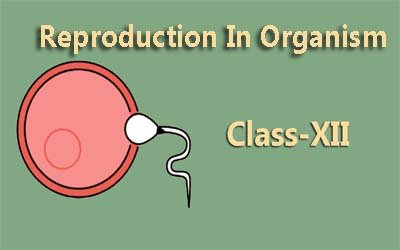Locomotion And Movement - Class 11
From slithering snakes to sprinting cheetahs, movement is everywhere in the animal kingdom! In Class 11 Biology, you'll delve into the fascinating world of Locomotion and Movement, exploring how organisms of all shapes and sizes get around. The Big Picture: Movement vs. Locomotion: Learn the difference! Movement is any change in body position, while locomotion is movement that leads to a change in location. The Players: Discover the variety of structures and mechanisms that different organisms use for movement, like muscles, cilia, flagella, and even pseudopodia in amoebas! Types of Movement: The Three Main Movers: Explore the three major categories of movement: Amoeboid Movement: The ever-changing shape shifting of amoebas for movement. Ciliary and Flagellar Movement: Microscopic hair-like structures that propel organisms or move fluids within them. Muscular Movement: The powerhouse behind most complex movements in animals, including humans. Let's Get Moving - The Human Body: Muscles: The Engine: Unravel the structure and function of different muscle types (skeletal, smooth, cardiac) and how they work together to generate movement. The Skeletal System: The Framework: Explore how bones and joints provide a framework for muscles to act upon and facilitate coordinated movement. The Nervous System: The Control Center: Learn how the nervous system coordinates muscle activity and sends signals for movement. Why It Matters: From Finding Food to Escaping Predators: Locomotion is essential for survival, allowing organisms to find resources, escape danger, and reproduce. The Importance of Coordination: Understanding how different systems work together for movement highlights the interconnectedness of life processes. সরানো সাপ থেকে শুরু করে দ্রুতগতির চিতা পর্যন্ত, প্রাণীজগতের সর্বত্রই চলাচল রয়েছে! একাদশ শ্রেণিতে জীববিজ্ঞানে, আপনি লোকোমোশন এবং মুভমেন্টের আকর্ষণীয় জগতে প্রবেশ করবেন, কীভাবে সমস্ত আকার এবং আকারের জীবগুলি চারপাশে আসে তা অন্বেষণ করবেন। বড় ছবিঃ মুভমেন্ট বনাম লোকোমোশনঃ পার্থক্য শিখুন! নড়াচড়া হল শরীরের অবস্থানের যে কোনও পরিবর্তন, অন্যদিকে নড়াচড়া হল এমন নড়াচড়া যা অবস্থানের পরিবর্তনের দিকে পরিচালিত করে। খেলোয়াড়রাঃ পেশী, সিলিয়া, ফ্লাজেলা এবং এমনকি অ্যামিবা-র সিউডোপোডিয়ার মতো বিভিন্ন জীব চলাচলের জন্য যে বিভিন্ন কাঠামো এবং প্রক্রিয়া ব্যবহার করে তা আবিষ্কার করুন! চলাফেরার প্রকারঃ তিনটি প্রধান মুভারঃ চলাচলের তিনটি প্রধান বিভাগ অন্বেষণ করুনঃ অ্যামিবয়েড মুভমেন্টঃ চলাচলের জন্য অ্যামিবাগুলির চির-পরিবর্তনশীল আকৃতি স্থানান্তর। সিলিয়ারি এবং ফ্ল্যাজেলার মুভমেন্টঃ মাইক্রোস্কোপিক চুলের মতো কাঠামো যা জীবকে চালিত করে বা তাদের মধ্যে তরল স্থানান্তর করে। পেশী চলাচলঃ মানুষ সহ প্রাণীদের মধ্যে সবচেয়ে জটিল চলাফেরার পিছনে পাওয়ার হাউস। চলুন নড়াচড়া করি-মানবদেহঃ পেশীঃ ইঞ্জিনঃ বিভিন্ন ধরনের পেশী (কঙ্কাল, মসৃণ, কার্ডিয়াক) এর গঠন এবং কার্যকারিতা এবং কীভাবে তারা আন্দোলন তৈরি করতে একসাথে কাজ করে তা উন্মোচন করুন। স্কেলেটাল সিস্টেমঃ কাঠামোঃ হাড় এবং জয়েন্টগুলি কীভাবে পেশীগুলিকে কাজ করার জন্য একটি কাঠামো সরবরাহ করে এবং সমন্বিত চলাচলকে সহজতর করে তা অন্বেষণ করুন। স্নায়ুতন্ত্রঃ নিয়ন্ত্রণ কেন্দ্রঃ শিখুন কিভাবে স্নায়ুতন্ত্র পেশী ক্রিয়াকলাপের সমন্বয় করে এবং চলাফেরার জন্য সংকেত পাঠায়। কেন এটি গুরুত্বপূর্ণঃ খাদ্যের সন্ধান থেকে শুরু করে শিকারীদের এড়িয়ে যাওয়া পর্যন্তঃ বেঁচে থাকার জন্য লোকোমোশন অপরিহার্য, যা জীবকে সম্পদ খুঁজে পেতে, বিপদ থেকে বাঁচতে এবং পুনরুত্পাদন করতে দেয়। সমন্বয়ের গুরুত্বঃ চলাফেরার জন্য বিভিন্ন ব্যবস্থা কীভাবে একসাথে কাজ করে তা বোঝা জীবন প্রক্রিয়াগুলির আন্তঃসংযোগকে তুলে ধরে।
English
Last updated
Wed, 27-Nov-2024



















